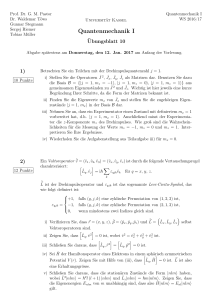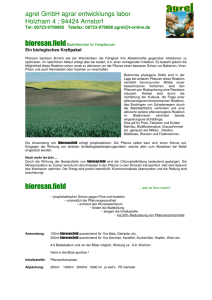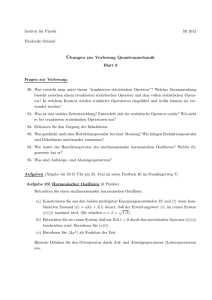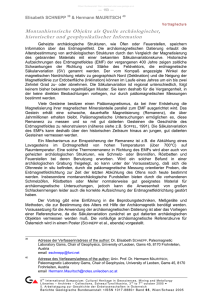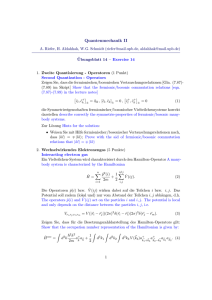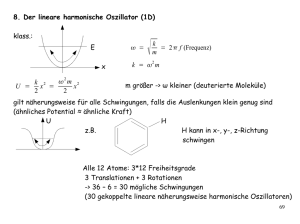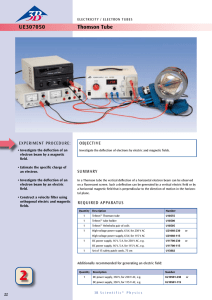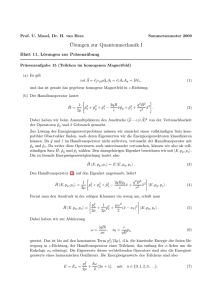5th sheet
Werbung
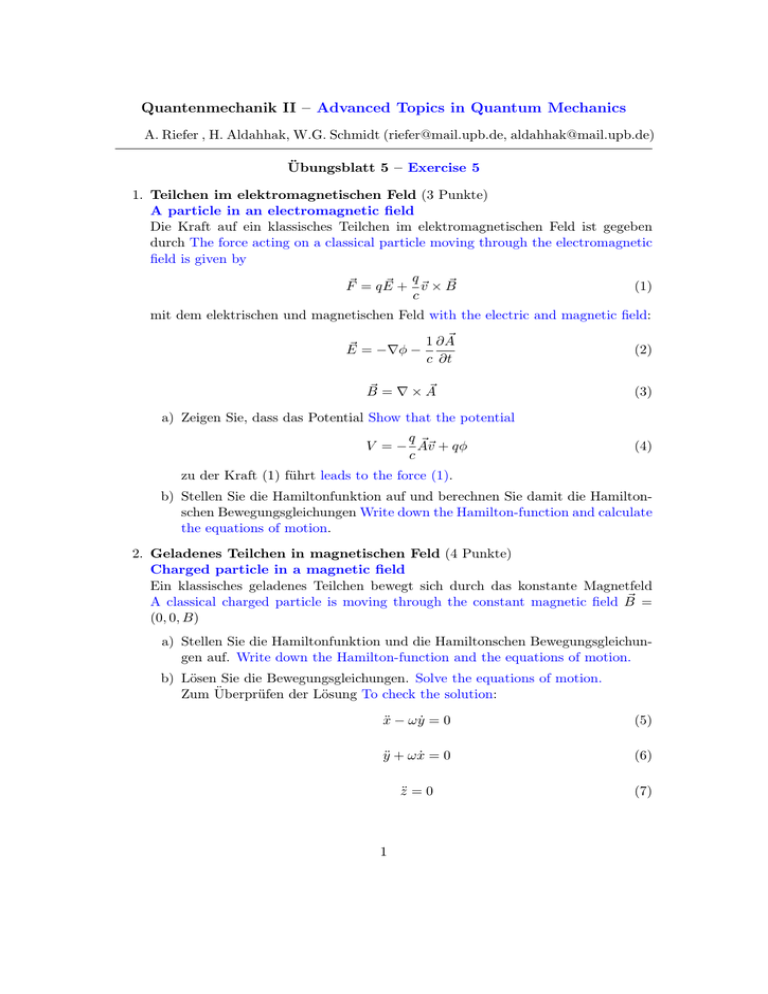
Quantenmechanik II – Advanced Topics in Quantum Mechanics A. Riefer , H. Aldahhak, W.G. Schmidt ([email protected], [email protected]) Übungsblatt 5 – Exercise 5 1. Teilchen im elektromagnetischen Feld (3 Punkte) A particle in an electromagnetic field Die Kraft auf ein klassisches Teilchen im elektromagnetischen Feld ist gegeben durch The force acting on a classical particle moving through the electromagnetic field is given by ~ + q ~v × B ~ F~ = q E (1) c mit dem elektrischen und magnetischen Feld with the electric and magnetic field: ~ ~ = −∇φ − 1 ∂ A E c ∂t (2) ~ =∇×A ~ B (3) a) Zeigen Sie, dass das Potential Show that the potential q~ V = − A~ v + qφ c (4) zu der Kraft (1) führt leads to the force (1). b) Stellen Sie die Hamiltonfunktion auf und berechnen Sie damit die Hamiltonschen Bewegungsgleichungen Write down the Hamilton-function and calculate the equations of motion. 2. Geladenes Teilchen in magnetischen Feld (4 Punkte) Charged particle in a magnetic field Ein klassisches geladenes Teilchen bewegt sich durch das konstante Magnetfeld ~ = A classical charged particle is moving through the constant magnetic field B (0, 0, B) a) Stellen Sie die Hamiltonfunktion und die Hamiltonschen Bewegungsgleichungen auf. Write down the Hamilton-function and the equations of motion. b) Lösen Sie die Bewegungsgleichungen. Solve the equations of motion. Zum Überprüfen der Lösung To check the solution: ẍ − ω ẏ = 0 (5) ÿ + ω ẋ = 0 (6) z̈ = 0 (7) 1 3. Hamiltonoperator und Magnetfeld (3 Punkte) Hamilton operator and magnetic field a) Zeigen Sie, dass aus dem Hamiltonoperator Gl. (2.10) im Skript der Hamiltonoperator zur Berechnung des Zeeman-Effektes Gl. 2.31 folgt, falls quadra~ = tische Beiträge in B vernachlässigt werden. Hinweise: Verwenden Sie A B 2 (−y, x, 0), die Coulomb-Eichung sowie Rechenregeln bzgl. des Nabla-Operators. Show that for the Hamilton operator eq. (2.10) in the lecture notes the Hamilton operator for calculating the Zeeman effect eq. (2.31) follows, if ~ = B (−y, x, 0), the contributions quadratic in B are neglected. Hints: Use A 2 Coulomb gauge, and calculation rules concerning the Nabla operator. b) Zeigen Sie, dass für den Hamiltonoperator eines freien Teilchens im konstanten Magnetfeld [d.h. ϕ = 0 in Gl. (2.10)] gilt: Show that the following applies for the Hamilton operator of a free particle in a constant magnetic field [i.e. ϕ = 0 in eq. (2.10)]: p̂2 Ĥ = Ĥ0 + z − ωZ BLz . (8) 2m Ĥ0 ist der Hamiltonoperator eines 2-dimensionalen Harmonischen Oszillators. Bestimmen Sie zusätzlich die Frequenz des Harmonischen Oszillators sowie ωZ . Ĥ0 is the Hamilton operator of a 2-dimensional Harmonic Oscillator. Additionally determine the frequency of the Harmonic Oscillator and also ωZ . 2
